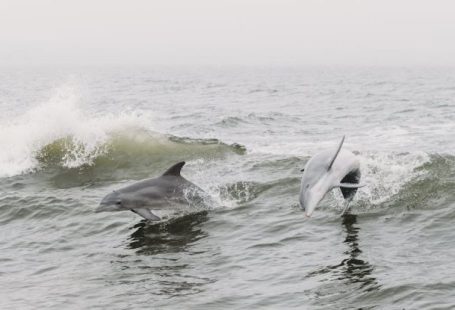Artificial reefs have become increasingly popular around the world due to their numerous benefits for marine ecosystems and coastal communities. These man-made structures serve as habitats for a variety of marine life, enhance biodiversity, protect coastlines, and provide opportunities for research and eco-tourism. In this article, we will delve into the fascinating world of artificial reefs and explore the many advantages they offer.
Enhancing Marine Biodiversity
Artificial reefs play a crucial role in enhancing marine biodiversity by providing new habitats for a wide range of marine species. These structures attract fish, corals, sponges, and other marine organisms, creating thriving ecosystems in areas that were previously devoid of such diversity. By increasing the availability of suitable habitats, artificial reefs help support the growth of fish populations and contribute to the overall health of marine ecosystems.
Protecting Coastlines
One of the key benefits of artificial reefs is their ability to protect coastlines from erosion and storm damage. These structures can dissipate wave energy, reducing the impact of strong currents and preventing erosion along vulnerable shorelines. By acting as barriers, artificial reefs help stabilize coastal areas and mitigate the effects of rising sea levels and increasingly severe weather events. In this way, these man-made structures play a vital role in coastal protection and management.
Boosting Fisheries
Artificial reefs also have a significant impact on local fisheries by providing additional habitats for fish to breed, feed, and seek shelter. By attracting fish populations to specific areas, artificial reefs can help increase fish stocks and support sustainable fishing practices. Fishermen benefit from the presence of artificial reefs as these structures create hotspots for fishing, resulting in higher catches and improved livelihoods. Furthermore, the establishment of artificial reefs can reduce pressure on natural reef systems, allowing them to recover and thrive.
Promoting Tourism and Recreation
Artificial reefs have the potential to attract tourists and recreational divers, providing economic opportunities for coastal communities. These man-made structures create underwater environments that are ideal for diving, snorkeling, and marine tourism activities. Tourists are drawn to artificial reefs to explore the diverse marine life that inhabits these structures, offering a unique and captivating underwater experience. By promoting eco-tourism, artificial reefs can stimulate local economies and support sustainable development in coastal regions.
Facilitating Research and Education
Artificial reefs serve as valuable sites for scientific research and environmental education. Researchers can study the ecological processes and interactions taking place on artificial reefs, gaining insights into marine ecosystem dynamics and biodiversity. These structures also provide a hands-on learning opportunity for students and educators, allowing them to observe marine life up close and learn about the importance of reef conservation. By serving as outdoor classrooms, artificial reefs help raise awareness about marine conservation and inspire future generations to protect our oceans.
In conclusion, artificial reefs offer a wide range of benefits for marine ecosystems, coastal communities, and the environment as a whole. From enhancing biodiversity and protecting coastlines to boosting fisheries and promoting tourism, these man-made structures play a crucial role in supporting marine life and sustainable development. By recognizing the value of artificial reefs and investing in their creation and maintenance, we can harness their potential to create thriving marine habitats and ensure a healthy future for our oceans.





